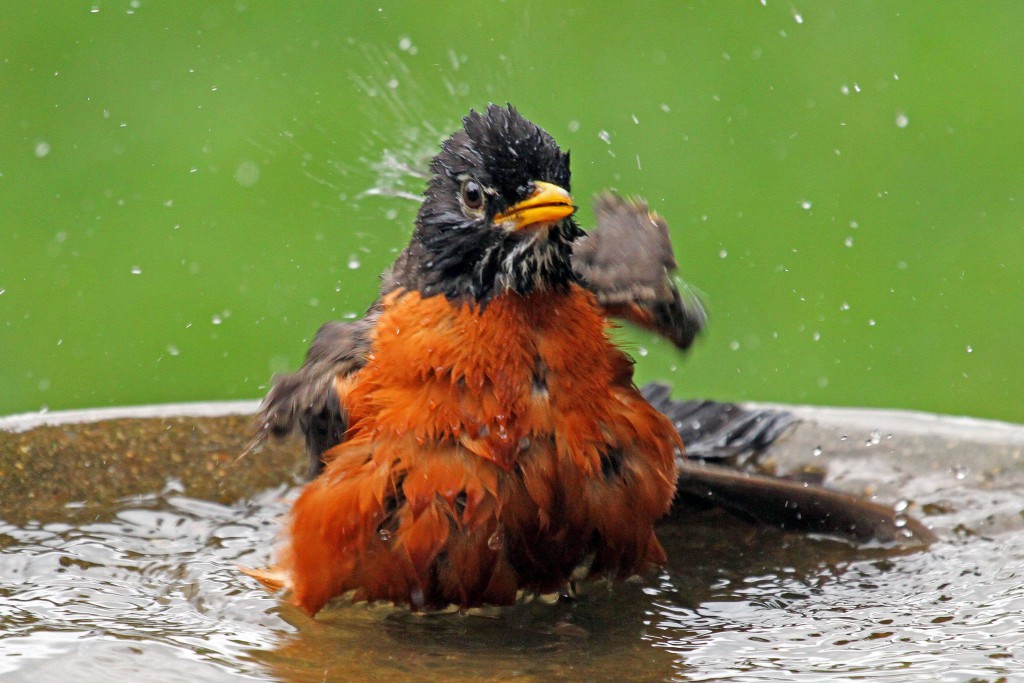The oppressive heat of late is hard on birds, people, plants and other creatures.
In hot weather without much rain, natural sources of water for birds may dry up. Birds need fresh, clean water for drinking and bathing. Most birds drink water every day and they also use water to clean their feathers and remove parasites.
After splashing around in a birdbath, birds usually perch in a sunny spot and fluff their feathers out to dry. Then, most birds carefully preen each feather, adding a protective coating of oil excreted by a gland at the base of their tail. Birds bathe and preen to enhance the insulation value of their feathers. (See What It’s Like to Be a Bird by David Allen Sibley.)
Good birdbaths are similar to shallow puddles, which are the natural birdbaths of the wild. Choose a shallow container that’s easy to clean, like a shallow baking pan, a trash can lid or plastic lid from a large container. While bird baths may be set on the ground, placing them about four feet off the ground is better to avoid predators. You can also punch holes in the container to hang it using a wire on a hook. The Cornell Lab of Ornithology’s All About Birds website has more information on how to attract birds with birdbaths.
If possible, in the summer, place the birdbath in the shade, near trees or shrubs. This will help keep the water at a decent temperature and provide a place for birds to await their “turn” or escape if a predator approaches.
Birds are attracted to baths in the winter too, and you can get a birdbath with a heating element. A sunny location is helpful when it’s colder, and birds also like baths with moving water, like a fountain. Whatever the season, remember to clean the bath every couple of days.
You’ll find that the birdbath attracts all kinds of birds, including those that don’t eat seeds and wouldn’t otherwise visit your garden. Whatever you decide to do, the birds will appreciate your effort. Let’s keep Evanston a bird-friendly place!
Related Stories


Comments are closed.